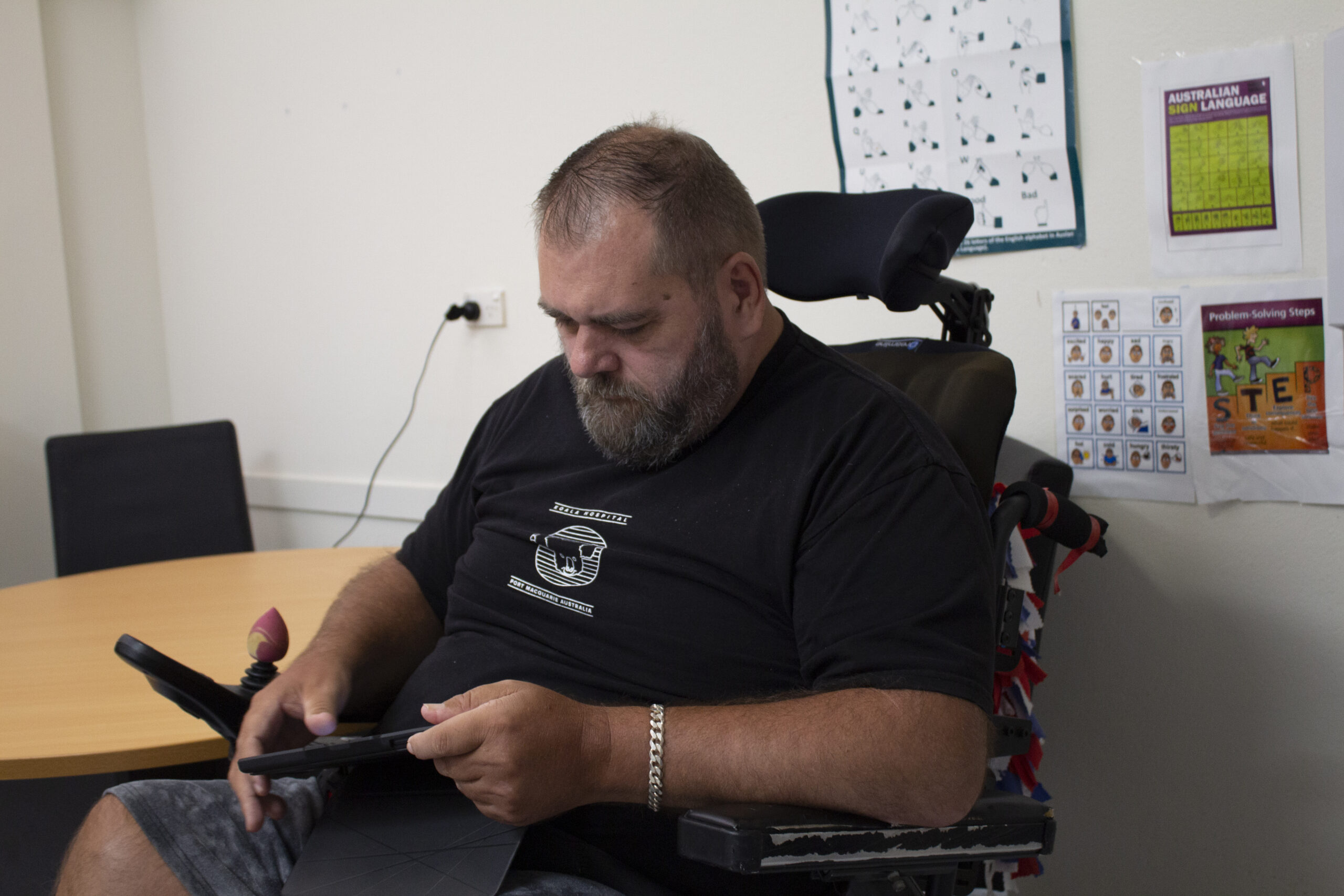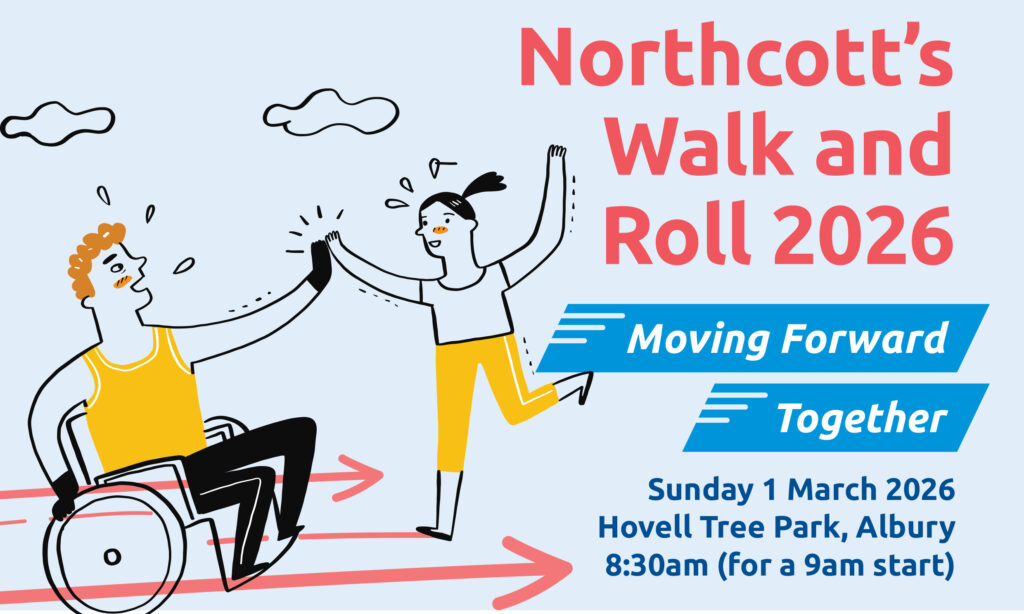
There are so many kinds of equipment and assistive technology that are designed to make life easier for people with a disability. Some are cutting edge and high tech while other items are more basic but potentially just as life changing.
To purchase equipment or assistive technology through the National Disability Insurance Scheme (NDIS), you will need to have Assistive Technology (AT) included in your NDIS plan or your therapist can write a report recommending that your plan is reviewed to include necessary/appropriate AT. When you first access the NDIS or review your plan, talk to you NDIS Planner about what equipment you need, as well as, how the equipment will help you to participate in your community.
Your NDIS plan can include funding for an Assistive Technology assessment. This assessment can help both a participant and the NDIA to understand what the most appropriate Assistive Technology solutions are. Your Montrose therapist can help complete the assessment.
What can I access?
A wide range of disability related equipment and assistive technology can be accessed under the NDIS. The process varies according to the type and cost.
Low cost assistive technology: Under $1,500 per item
Low cost assistive technology items are easy to use and are available from local suppliers or general non-disability specific retailers. Quotes aren’t required for these items, and they can be purchased from your Core – Consumables section of your budget.
Examples of low-cost assistive technology items include: continence products, non-slip bathmats, large print labels, walking sticks and basic shower chairs.
If you don’t have the required funding to purchase the items you need, consult your LAC or have the products included in your GAP report.
Mid cost assistive technology: Between $1500 and $15,000 per item
Mid cost assistive technology items may be more difficult to choose and set up on your own. It’s best to consult your therapist and seek their input prior to submitting an application to the NDIS. You can find funding for mid cost assistive technology in you Capital budget. If you don’t have the required funding you’ll need written evidence from your therapist.
Examples of mid cost assistive technology include: a standing hoist, a customised shower chair, ankle-foot orthotics, alternative communication devices, some power chairs, pressure care mattresses.
High cost assistive technology: over $15,000 per item
Hight cost assistive technology items will likely be customised to your needs and therefore require an individual assessment. This is due to the complexity of equipment and the specialised knowledge required to set it up. A quote is required for high cost items so that the right amount of funding can be allocated to your plan.
Funding for high cost assistive technology can be found in the Capital section of your plan. It may state the specific item you need or say quote required- your plan will explain this to you.
Examples of high cost assistive technology include: a wheelchair custom-made for you, some complex communication devices, many prosthetics, ventilators.
The information you need to provide for AT depends on the cost and risk. For some items, you’ll need an AT advisor to help identify the most appropriate equipment for your needs. The AT advisor may be an allied health practitioner like a Montrose therapist. For high cost assistive technology over $15,000, the NDIS requires both an assessment and quote for the AT proposed.
How does the assistive technology process work?
Some of this might be sounding quite complicated already so let’s break it down a bit.
Talk to your therapist
In most cases you’ll need help from one of our therapy team. They can assess your need for the equipment and help you find the right solution as well as getting quotes. We can also help you approach the NDIS to ensure you have the required funding. If you don’t want to interrupt your therapy schedule, you could book a special meeting to discuss equipment. If you have therapy in your NDIS plan, the NDIS will fund the appointments to do this. An AT assessment report may be required regarding the successful trial of a level 1 or 2 AT item – your therapist can help you to schedule the trial of the AT item.
Get quotes
Your therapist can support you to get a quote or multiple quotes as required. Providers must be registered with the NDIS.
Submit your quote
You’ll need to submit your quote and any relevant AT assessment/trial reports that have been completed by your therapist to the NDIS. Your therapist can help with this.
Get the invoice approved and paid by the NDIS
Once the NDIS has approved your quote, ask the supplier for an invoice. This can be paid just like any other NDIS invoice. Talk to your Plan Manager if you have one.
Get your equipment delivered
After the invoice is approved and paid, you will need to order the item from the manufacturer/ supplier. Again, your therapist may help with this process. Delivery times can vary so make sure you check this. In some cases, the NDIS can fund hire of equipment if there is a long wait for delivery.
Don’t forget maintenance costs
The NDIS can fund repair and maintenance costs but you need to ask! It may not be automatically included so don’t forget to request this at your planning meeting.
What is Assistive Technology?
The NDIS definition of Assistive Technology is based on the World Health Organisation definition of “Any device or system that allows individuals to perform tasks they would otherwise be unable to do or increases the ease and safety with which tasks can be performed”.
It’s easy to focus on the word “technology” as meaning electronic or computer related. In reality though, it can be anything that makes life easier and can include anything from the very basic to high tech.
How Montrose therapists can help with equipment and assistive technology
Our therapists can help with prescription and selection of equipment. Depending on your needs, you may require input from one or several of our therapy team.
How can Occupational Therapists help with Assistive Technology?
- Use of ‘low’ technology – this includes assistance with typing at school, alter switches, keyboards, computer mouse, tracking devices, apps to help classroom work
- Prescribing equipment within the home – Shower commode, hoist, pressure mattress, continence aids (nappies), ramps, activity chairs, wheelchair attachments (Mounting systems for IPad and Eye Gaze), assistive technology for dressing, assistive technology for eating and drinking
- Prescribing equipment for vehicles (If the customer is a passenger) – Specialised car seats, wheelchair accessible vehicles, ramps, hoist
- Training in use of prescribed equipment
- Minor home modifications – rails, small ramps (1-2 steps) and removal of shower screens
- ‘High’ Tech items – computers, laptops, tablets/IPads. Please discuss these options with your therapist as their use needs to be specifically related to your disability.
How can Speech Therapists can help with Assistive Technology?
- Low tech and high tech alternative communication methods – Key word sign, picture exchange communication systems, switch access, PODD Books, text to speech devices, Core Vocabulary board, IPad/tablet communication software (E.g. PODD, Proloquo2go, SNAP + core, LAMP words for life, Eye Gaze)
- Communication equipment trials, prescriptions and training
How can Physiotherapists help with Assistive Technology?
- Equipment applications for – Powerdrive wheelchairs, manual wheelchairs, buggys, strollers, pressure relief cushions, beach wheelchairs, standing frames, modified tricycles, walking aids etc.
- Training in use of prescribed equipment
- Advice about appropriate physical supports and equipment to promote skills development including toys, orthotics etc.
Assistive Technology for autism
Assistive technology can support communication for people with autism, whatever their level of speech ability.
In particular, Augmentative and Alternative Communication (AAC) has benefits that can benefit people with autism by expanding their communication abilities. With the support of your therapist, appropriate AAC options can have significant benefits – such as facilitating social interactions with others and increasing independence.



Accessibility and Inclusivity
We respect and honour Aboriginal and Torres Strait Islander Elders past, present and future. We acknowledge the stories, traditions and living cultures of Aboriginal and Torres Strait Islander peoples on this land and commit to building a brighter future together.
Read more about our commitment to reconciliation

